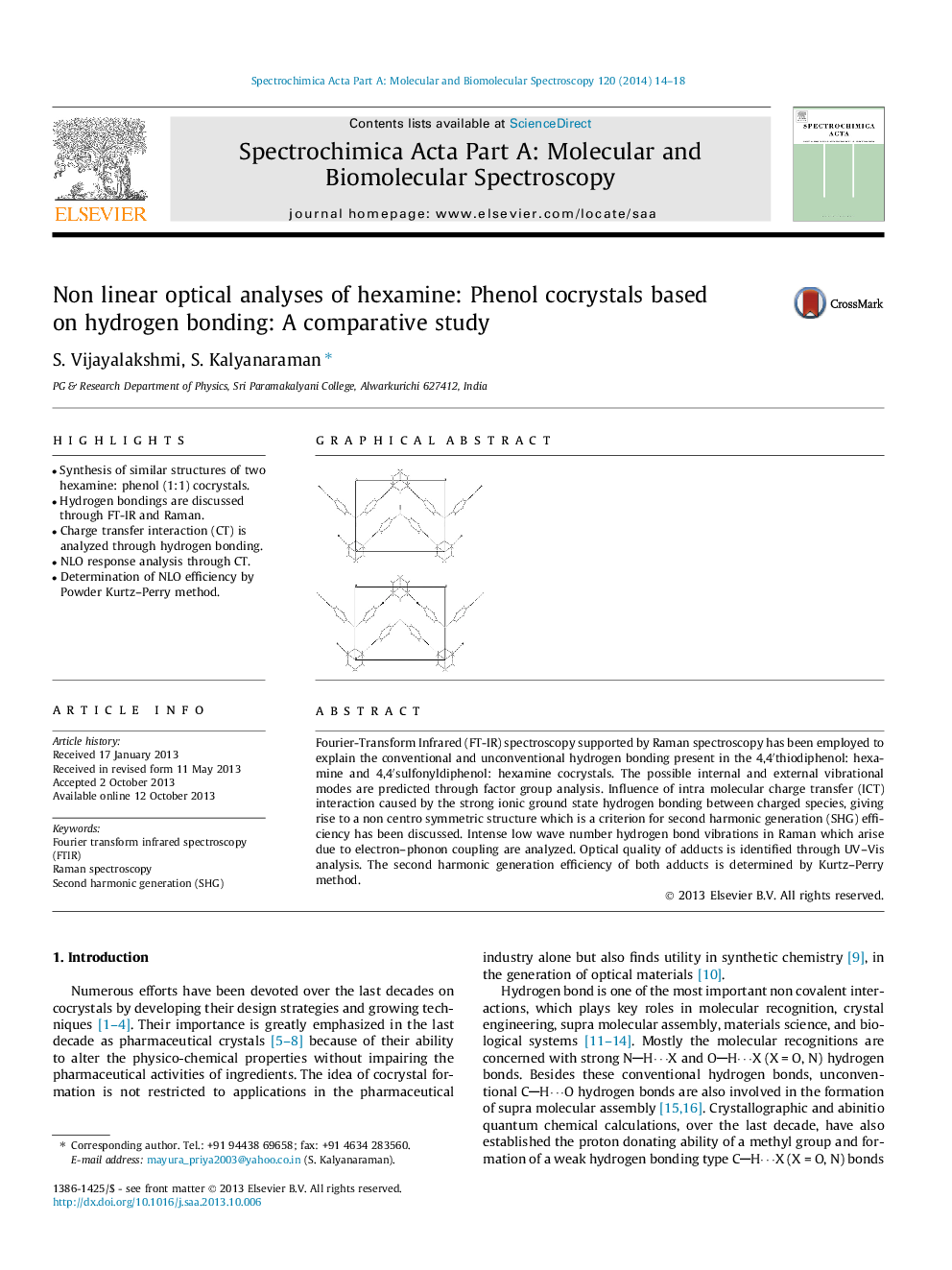| Article ID | Journal | Published Year | Pages | File Type |
|---|---|---|---|---|
| 1230817 | Spectrochimica Acta Part A: Molecular and Biomolecular Spectroscopy | 2014 | 5 Pages |
•Synthesis of similar structures of two hexamine: phenol (1:1) cocrystals.•Hydrogen bondings are discussed through FT-IR and Raman.•Charge transfer interaction (CT) is analyzed through hydrogen bonding.•NLO response analysis through CT.•Determination of NLO efficiency by Powder Kurtz–Perry method.
Fourier-Transform Infrared (FT-IR) spectroscopy supported by Raman spectroscopy has been employed to explain the conventional and unconventional hydrogen bonding present in the 4,4′thiodiphenol: hexamine and 4,4′sulfonyldiphenol: hexamine cocrystals. The possible internal and external vibrational modes are predicted through factor group analysis. Influence of intra molecular charge transfer (ICT) interaction caused by the strong ionic ground state hydrogen bonding between charged species, giving rise to a non centro symmetric structure which is a criterion for second harmonic generation (SHG) efficiency has been discussed. Intense low wave number hydrogen bond vibrations in Raman which arise due to electron–phonon coupling are analyzed. Optical quality of adducts is identified through UV–Vis analysis. The second harmonic generation efficiency of both adducts is determined by Kurtz–Perry method.
Graphical abstractSimilar crystal packing diagram of 4,4′sulfonyldiphenol: hexamine and 4,4′thiodiphenol: hexamine through OH⋯N hydrogen bonding.Figure optionsDownload full-size imageDownload as PowerPoint slide
